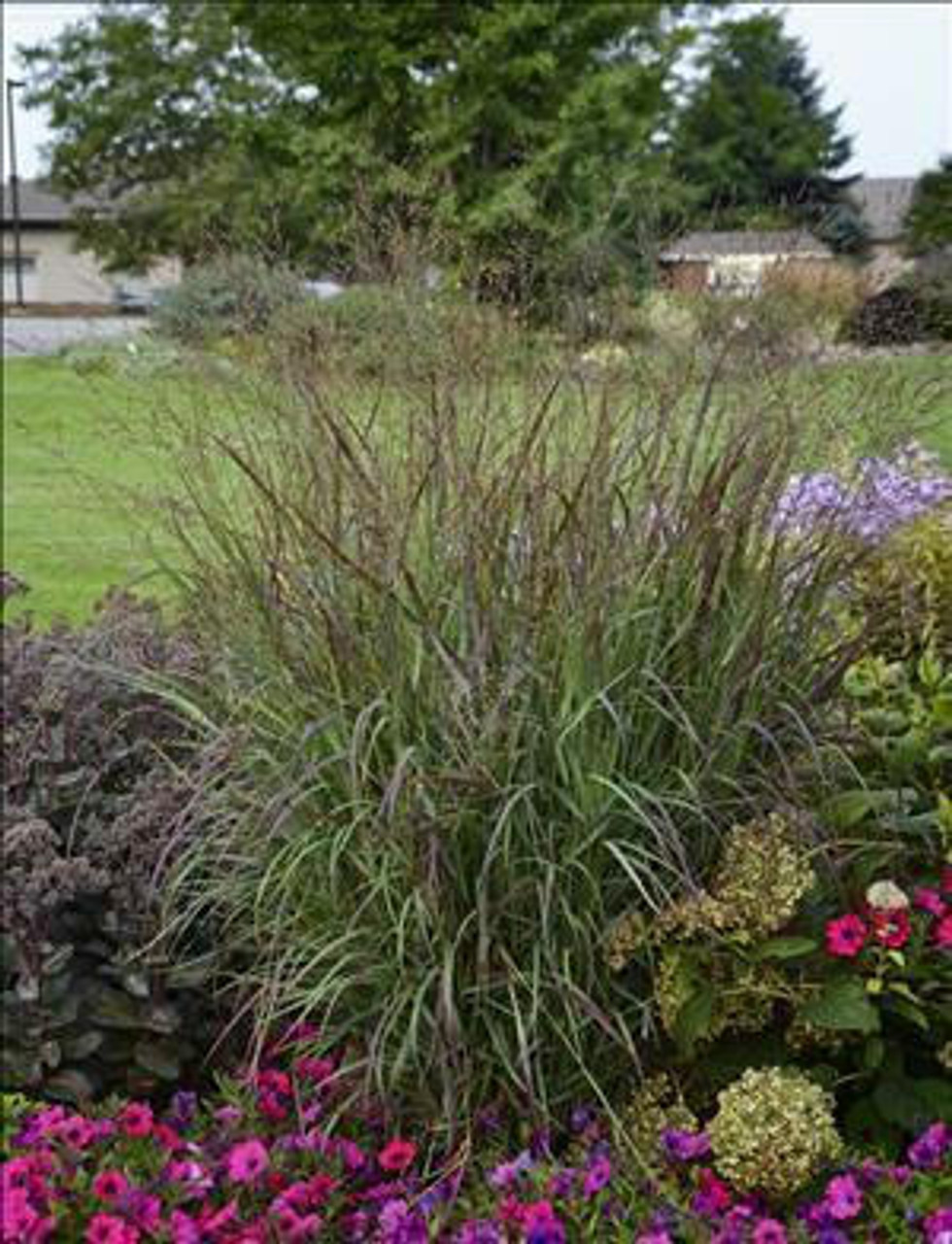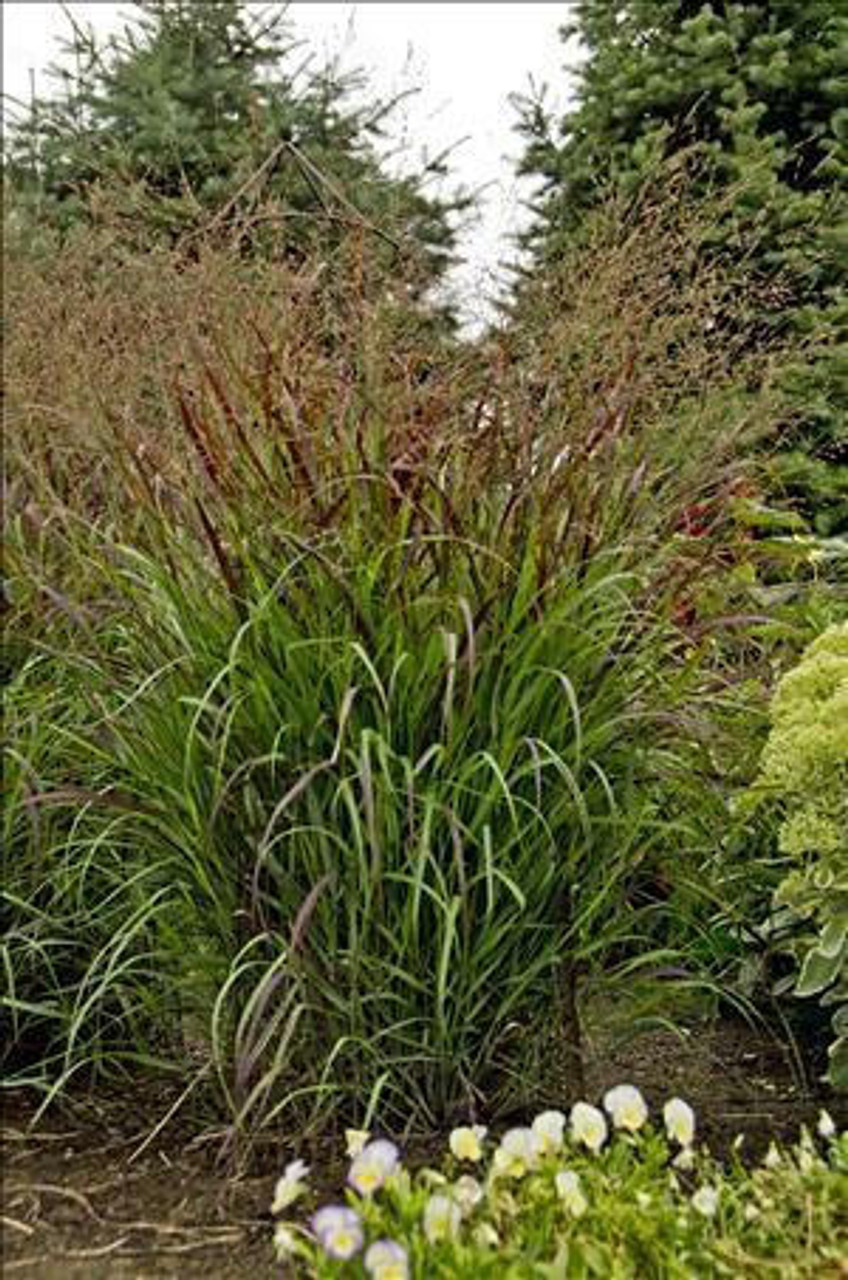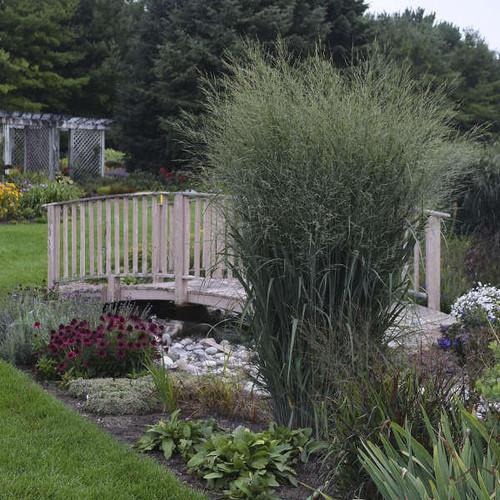Product Description
Panicumvirgatum'Cheyenne Sky' PP23209 (4) 1-gallons
Common Name: Grass-Ornamental, Red Switch Grass
this hardy Red Switch Grass is a perennial substitute for Pennisetum 'Rubrum'. Measuring in at just 3' (2' before blooming), 'Cheyenne Sky' forms a tight, vase-shaped clump of blue-green foliage that begins turning wine red in early summer.
By late summer, nearly the entire clump is drenched in color and is topped by matching wine-red flower panicles held just above the foliage. It makes a dynamite specimen plant and is even more eye-catching when planted en masse.
Height: 3.0 Feet
Spread: 1.5 Feet
Hardiness Zones: 4,5,6,7,8,9
Flower Color: Purple-red shades
Foliage Color: Purple shades
Full Sun
Low to Consistent Water Needs
Poor to Fertile Soil Quality
Bloomtime: Late Summer
Deer Resistant
Seasonal Interest: Dried Seed Heads, Fall Color
Growth Rate: Medium
Panicum virgatum 'Cheyenne Sky' is a stunning variety of switchgrass that's prized for its early-developing red foliage and upright habit. It's a fantastic choice for adding vertical interest, texture, and vibrant color to sunny gardens. Here's a closer look at what makes this cultivar special:
Key Features:
- Early Red Foliage: Unlike many other switchgrasses that develop red tones later in the season, 'Cheyenne Sky' starts showing its vibrant wine-red coloration in early summer. The blue-green leaves quickly become infused with streaks of red, creating a dramatic and eye-catching display.
- Upright Habit: This cultivar maintains a strong, upright habit, typically growing 3 feet tall and 1.5-2 feet wide. Its vertical form makes it a great choice for adding structure to borders and landscapes.
- Airy Flower Panicles: In late summer, airy, reddish-purple flower panicles rise above the foliage, adding another layer of texture and interest. These panicles persist into fall and winter, providing visual appeal even after the growing season ends.
- Adaptable and Hardy: 'Cheyenne Sky' thrives in full sun and tolerates a wide range of soil conditions, including dry and moist soils. It's also hardy in USDA zones 5-9, making it suitable for various climates.
- Low Maintenance: This switchgrass is relatively low-maintenance and doesn't require deadheading or frequent watering once established.
- Wildlife-Friendly: The seedheads provide food for birds in the fall and winter, and the dense foliage offers shelter for small creatures.
Growing Tips:
- Sunlight: Plant in full sun (at least 6 hours per day) for the best foliage color and flowering. It can tolerate some light shade, but the red coloration may be less intense.
- Soil: Prefers well-drained soil but tolerates a variety of soil types, including clay and sandy soils.
- Water: Water regularly during the first growing season to establish a strong root system. Once established, it's fairly drought-tolerant.
- Hardiness: 'Cheyenne Sky' is hardy in USDA zones 5-9, tolerating cold winters and hot summers.
- Maintenance: Cut back the foliage to the ground in late winter or early spring before new growth emerges. This will tidy up the plant and encourage fresh growth.
Design Ideas:
- Vertical Accent: Use 'Cheyenne Sky' as a vertical accent in borders, foundation plantings, or as a specimen plant in a smaller garden.
- Containers: Its upright habit and manageable size make it suitable for container gardening, adding height and drama to patios and decks.
- Meadow Gardens: Combine with other native wildflowers and grasses for a naturalized look.
- Mass Plantings: Create a dramatic effect by planting 'Cheyenne Sky' en masse, forming a sea of colorful foliage and plumes.
- Erosion Control: Its dense root system makes it a good choice for stabilizing slopes and preventing erosion.
Border Plant, Cut Flower, Cut Foliage, Dried Flower, Drought Tolerant, Easy To Grow, Attractive Foliage, Mass Planting, Salt Tolerant, Focal Point
(4) 1-gallon containers ready to plant, plants may be trimmed for shipping,
Other Details
The most important part of the plant is its root system. Healthy roots are the foundation of a healthy, vibrant plant. The type of plug container used is based on the specific needs of the plants. Perennials offered as bare root traditionally perform better when planted as bare root.Planted in a specialized mix, potted plants have well established root systems. Top growth stage will vary depending on the current life cycle and time of year when shipped. In Winter and early Spring dormant plants may be shipped. Dormant plants may be planted right away, even before the last frost date.
Most bare root varieties are field grown for at least one season, though Hemerocallis and Hosta are grown for two seasons. The bulk of the soil is removed during the harvesting process and the tops of most varieties are trimmed back to the crown. They are graded, packed in shredded aspen or sphagnum moss and stored in freezers until ready to be shipped.
See our Container Sizes and Bare Root Perennials pages for more information.
Plant information and care is provided in the Overview section, Plant Genus Page and general information is provided in the Planting Care & Guides. Additional questions can be asked on each Plant page.
Plant Spacing: Using the maximum mature spread or width of a plant to guide spacing, ensures space to grow to full size. To fill an area sooner, plant them closer together. Just remember, future thinning or transplanting may be needed.
Water: Keep a close eye on newly planted perennials, especially throughout the first growing year. Most early plant loss is due to too much or too little water!




















